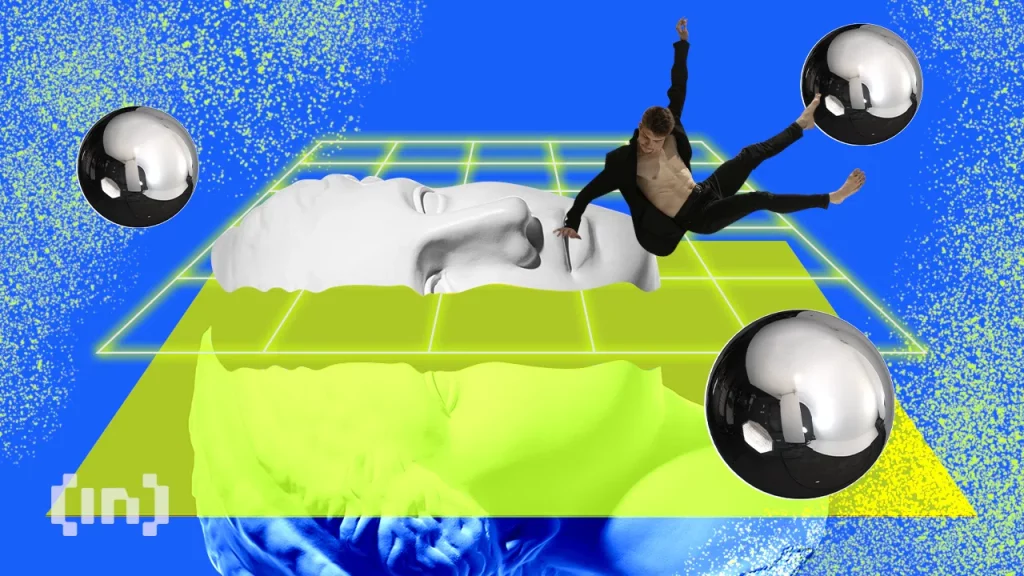Polygon CEO Bullish on Ethereum Dismisses Solana and Cardano

Polygon’s CEO, Sandeep Nailwal, recently made a bold prediction regarding the future of blockchain platforms, particularly Layer 1 technology.
According to Nailwal, Layer 1 is where the future lies for blockchain, with Ethereum leading the pack.
Layer 1 Dominance
Nailwal’s prediction is grounded in the belief that Layer 1 protocols will remain the foundation for the blockchain ecosystem. In contrast, Layer 2 protocols are built on top of Layer 1 and serve as a scaling solution to improve network efficiency. While L2 solutions have their place, Nailwal argues that Lay1 dominance is essential to the long-term success of blockchain platforms.
Ethereum’s Longevity and Scalability
Polygon’s chief sees Ethereum as the clear leader in the Layer 1 space, citing its longevity and scalability as major factors. Ethereum has proven its ability to scale and handle large volumes of transactions over time. In contrast, newer platforms such as Solana, Cardano, and Avalanche may struggle to match Ethereum’s first mover advantage.
L2: The Secret to Unlocking Ethereum’s Full Potential
Sandeep does not see the rise of Layer 2 solutions as a threat to Ethereum’s L1 dominance. Instead, he views L2 protocols as complementary to L1, providing a solution for network scalability without sacrificing security or decentralization. He believes that L2 solutions will help enhance Ethereum’s capabilities and make it a more formidable force in the blockchain space.
Potential Impact
Nailwal’s pontifications could have significant implications for the broader blockchain industry and its participants. If Layer 1 dominance remains the norm, then platforms that can’t establish themselves as a go-to L1 solution may find it hard to survive.
Conversely, platforms that prove their longevity and scalability could gain a competitive advantage.
Besides, the adoption of Layer 2 solutions could also benefit Ethereum and other Layer 1 protocols. With L2 offering solutions to network scalability, Layer 1 protocols can focus on improving security and decentralization. This could lead to faster innovation in the blockchain space and provide new opportunities for developers and entrepreneurs alike.
Potential Challenges for Ethereum
While Polygon’s predictions may paint a rosy picture for Ethereum, there are still potential challenges that the platform may face. One significant issue is Ethereum’s high gas fees, which can make it challenging for developers and users to access the network. Additionally, Ethereum’s move to a proof-of-stake has reduced energy consumption dramatically, but gas fees are still high.
Polygon and The Ethereum “Killers”
While Polygon’s founder dismisses Solana, Cardano, and Avalanche, these platforms are still formidable competitors in the blockchain space. Solana, for instance, has gained significant attention for its high-speed network and low transaction fees. Cardano, on the other hand, has a strong focus on security and has already established several partnerships with governments and institutions. Avalanche has also gained attention for its sub-second transaction finality and interoperability capabilities.
Layer 1 vs. Layer 2
Nailwal also shared his thoughts on the relationship between L1 and L2 solutions. While many in the blockchain community see L2 as a potential threat to Layer 1’s dominance, Nailwal sees it differently. Instead, he sees Layer 2 as a complementary solution that can enhance the capabilities of Layer 1.
Layer 2 solutions, such as Polygon, are designed to alleviate the scalability issues that can occur with L1 platforms. By building on top of L1 solutions, L2 solutions can provide faster and cheaper transactions without compromising on security.
Nailwal believes that Layer 2 solutions will help to further enhance the capabilities of Ethereum’s Layer 1 platform, making it a more formidable force in the blockchain space. He believes that the combination of Layer 1 and Layer 2 solutions will lead to a more efficient and robust blockchain ecosystem.
Yet, the trend seems to be toward interoperability.
A Multi-Chain Future?
The future of blockchain technology is a topic of much debate, with some arguing that a multi-chain future is on the horizon. This would involve various chains “speaking” with each other under the umbrella of interoperability, allowing for greater flexibility and scalability.
Proponents of a multi-chain future argue that it offers a number of advantages over a single-chain approach. For one, it allows for greater diversity and flexibility, with different chains able to specialize in different areas. This can help to increase innovation and competition, leading to more rapid progress and development.
Interoperability also allows for greater scalability, as multiple chains can work together to handle larger transaction volumes. This is important as the blockchain industry continues to grow and evolve, with more and more users and applications joining the network.
There are also potential advantages in terms of security and decentralization. By spreading transactions across multiple chains, the risk of a single point of failure is reduced. This can make the overall network more resilient and less susceptible to attack or manipulation.
Impact on the Blockchain Industry
Nailwal’s insights could have implications for the broader blockchain industry and its participants. As the founder of Polygon, his views on L2 solutions are particularly significant.
These speculations could shape the future of the blockchain industry, particularly as Ethereum continues to be the dominant force in the space.
Moreover, Nailwal’s remarks could provide direction to new investors looking to enter the blockchain space. By highlighting the importance of L1 technology, he is making a case for established blockchain platforms, such as Ethereum, as a more secure and reliable investment option. Since Ethereum is the most active blockchain and second most valuable cryptocurrency this may indeed come to pass.
What This Means
Polygon’s CEO, Sandeep Nailwal’s opinion on Solana, Cardano, and Avalanche does not necessarily contradict Polygon’s motto of “Bringing the World to Ethereum.”
This mindset refers to Polygon’s mission to create a more accessible and user-friendly Ethereum, by building L2 scaling solutions that can help to address some of the limitations of the Ethereum network, such as high gas fees and slow transaction speeds.
His dismissal of Solana, Cardano, and Avalanche may be based on an assessment of their potential as competitors to Ethereum in the L1 space, where he clearly sees Ethereum as leader.
Yet, this doesn’t mean that Polygon is opposed to interoperability. Or collaboration between different blockchain platforms. In fact, Polygon has partnerships with a number of other platforms, including Aave, Curve, and Kyber Network, and has also launched a bridge to the Polkadot network, which allows for cross-chain transactions.
While Nailwal’s statements may reflect a belief in the long-term dominance of Ethereum in the L1 space, they do not necessarily contradict Polygon’s broader mission to make Ethereum more accessible and inclusive through L2 solutions.
Ultimately, Nailwal emphasized the importance of scalability, security, and longevity in the blockchain space. As blockchain platforms continue to evolve and develop, it will be essential to prioritize these aspects to create a robust and efficient blockchain ecosystem.
Disclaimer
All the information contained on our website is published in good faith and for general information purposes only. Any action the reader takes upon the information found on our website is strictly at their own risk.















